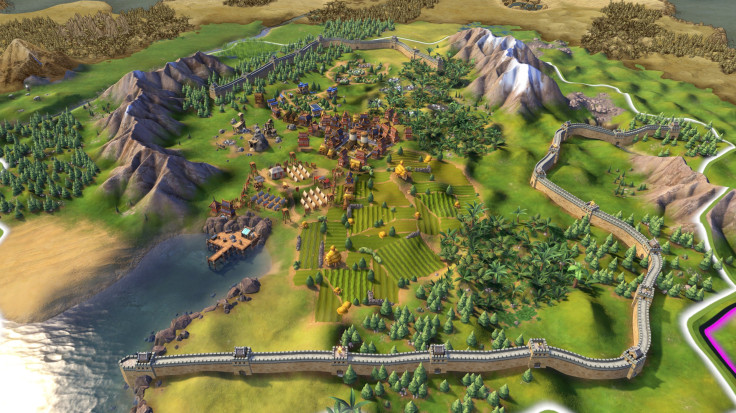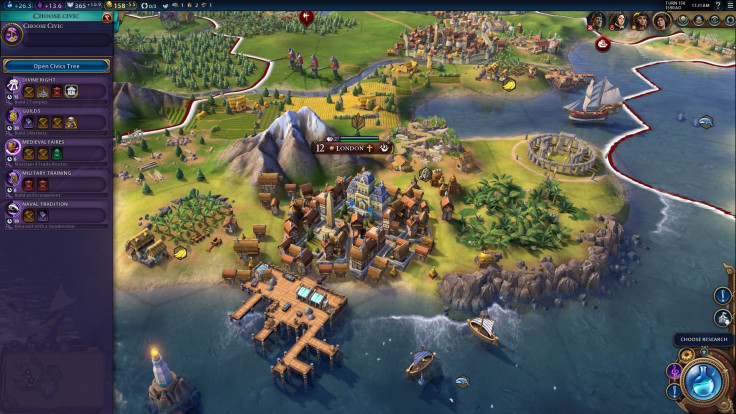Civilization 6 comes out on Oct. 21. The release date of the next game in the world’s most famous strategy series is a major landmark, and expectations are high. The game comes replete with new features and big ideas, from Districts to a more dynamic tech tree. iDigitalTimes recently had a chance to play through a working build of the game for the first 150 turns, and we got a very good sense of how the game feels. Short version: It’s a worthy successor to Civ V that pushes the series in legitimately new directions. Read on for the specifics, or check out our look at Districts and City States!
Civ 6 Features: How It All Feels

Civilization 6 takes a different approach than its predecessors. Most prior Civ games threw out a good chunk of the cool stuff about the previous game in favor of adding interesting new features. Thus, many Civ games when first released felt weirdly lighter on features than their immediate predecessors, which had been decked out with an expansion pack or two. Civ 6 clearly isn’t like that. More than any Civ game before it, it’s a direct successor to its predecessor. Civ 6 keeps a lot from Civ V. The basic interface and structure of turns, the style of combat, the presence of City-States all owes a lot to Civ V.
But it’s very much a sequel. Because, like Civ games past, Civ 6 adds a lot of new big ideas. It just keeps the big ideas from Civ V as well, and continues to modify them to make the game more strategically interesting. And the new features so far feel great. In our playable build, a few new elements truly jumped out: the new Civics tree, the system of tech bonuses and the interaction with City-States.
Civics In Civ 6

One of the first and most obvious differences between Civ 6 and Civ V is i n the Civics system . Formerly, you could add a new Social Policy whenever your civilization’s culture reached a certain level. You were stuck with each policy once you took it, which encouraged you to stay in a few Policy tracks. It wasn’t very versatile. The Civics system in Civ 6 is far more flexible. First, Civics are researched, and treated as their own entirely separate tech tree—and not a small one, either. Civics fall into a few categories—primarily economic, military and diplomatic—and there are, no joke, dozens of them. But you can only use a few at a time, with the number and types limited by your type of government. New government types can also be researched in the Civics tree and in the early game have a clear split between economic and military government types. Builders rejoice!
The great thing is, Civics are very easy and flexible to swap. You can change them freely basically whenever you discover a new one, which happens quite often, so there are essentially no penalties for switching. It actually feels great when you find yourself in a war or on the verge of one—doing a quick Civics switch feels like mobilizing for a wartime footing on the societal level, not just the martial one, and you can switch back easily enough later on.
Tech Bonuses

Compared to its predecessors, Civ 6 has a more dynamic approach to the tech tree that can basically be summed up thusly: A civilization that has never seen the ocean should take longer to learn to sail than one that lives off the sea. The dynamic bonuses of the Eureka (for technology) and Inspiration (for Civics) systems accomplish this. Every tech and Civic—yes, all of them—has one of these bonuses associated with it, and meeting that bonus will reduce that tech or Civic’s cost by a full 50 percent. The bonuses consist of minor tasks or conditions related to the tech. For instance, having a certain number of Archers triggers a bonus for the technology that gives you Medieval Archers; being attacked in a war cuts the cost for the Defensive Tactics Civic in half; that sort of thing.
Even a first playthrough shows that these bonuses are incredibly enticing and valuable—and that it’s impossible to reach all of them under realistic circumstances. You’re going to have to pay full freight for some techs and Civics. One of the strategic keys to the game, which will add a great deal of depth, will come in determining whether it’s worth pursuing the bonus for a Civic or technology, or just researching it at full cost. That dynamic is extremely exciting, and will drive a lot of research and production decisions—especially early on, when bonuses are easy to come by.
Combined, the revamped tech and Civics trees—which together are 50% larger than the Civ V tech tree—result in a game where technological advance is more exciting than ever. But that’s just the beginning of what’s new in Civ 6. Also check out our first impressions on Districts and City States.


















